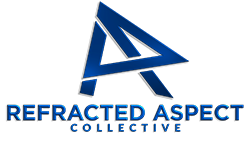
In men’s apparel businesses, especially those operating within the Shooting, Hunting & Outdoor Trades, recurring issues often emerge as a persistent drain on resources and focus. When a problem is flagged repeatedly, the critical question is whether it leads to a meaningful fix or simply cycles through the system without resolution. This dynamic creates a tension that directly impacts operational efficiency, decision-making, and ultimately, the bottom line.
- Understanding the Operational Tension Behind Recurring Issues
- When a Recurring Quality Concern Stalls in a Growing Apparel Business
- How Recurring Issues Disrupt Cross-Functional Workflows
- The Root Cause: Embedded Decision Avoidance in Operational Habits
- The First Meaningful Shift Toward Resolving Recurring Issues
- The Most Common Friction Point: Decision Paralysis Under Competing Priorities
- How Recurring Issues Manifest in Daily Operations
- Frequently Asked Questions
- Reframing the Challenge of Recurring Issues in Men’s Apparel Businesses
- Taking Practical Next Steps with Refracted Aspect
Understanding the Operational Tension Behind Recurring Issues
When a recurring issue is raised, the process that follows can either drive resolution or perpetuate stagnation. For leaders in men’s apparel businesses, this is not a theoretical concern but a daily operational reality. The tension lies in balancing limited resources against the need for timely, effective problem-solving.
These businesses face pressures from fluctuating market demands, regulatory requirements, and competitive forces that leave little room for inefficiency. A flagged issue that fails to progress beyond acknowledgment creates a bottleneck that slows product development, disrupts supply chains, and erodes customer trust.
Leaders must confront the cost of unresolved problems: wasted labor hours, missed sales opportunities, and the gradual erosion of team morale. The question is not just whether the issue is recognized, but whether the organizational process is structured to convert recognition into action. This operational tension is a critical point of failure that demands clear, strategic attention.
When a Recurring Quality Concern Stalls in a Growing Apparel Business
Consider a men’s apparel company specializing in durable outdoor wear. A recurring issue arises with a particular fabric’s durability under field conditions. The quality control team flags this repeatedly, but the problem lingers without a decisive fix.
Initial reports are logged, but the issue cycles through departments—design, sourcing, production—without clear ownership. Each team acknowledges the problem but defers responsibility, citing competing priorities or resource constraints. The result is a stalled decision that leaves the defect unaddressed.
This scenario captures the operational tension: the business is growing, demand is increasing, but a critical product flaw remains unresolved. The cost is tangible—returns increase, customer complaints rise, and brand reputation suffers. Yet, the issue remains in limbo, quietly draining capacity and focus.
How Recurring Issues Disrupt Cross-Functional Workflows
The ripple effects of unresolved recurring issues extend beyond the initial problem area. In men’s apparel businesses, quality concerns that circle without resolution create friction between product development and supply chain teams. Production schedules become unpredictable as sourcing struggles to secure alternative materials without clear direction.
Marketing and sales teams feel the impact as well. They face increased customer inquiries and complaints, forcing them to divert attention from growth initiatives to damage control. This misalignment creates a cycle where departments operate in silos, each reacting to symptoms rather than collaborating on solutions.
Downstream inefficiencies multiply. Inventory management becomes more complex due to inconsistent product quality, and forecasting accuracy declines. The business experiences a drag that is often invisible in day-to-day operations but accumulates significant cost and lost opportunity over time.
The Root Cause: Embedded Decision Avoidance in Operational Habits
The persistence of recurring issues in capable men’s apparel teams often traces back to a single root cause: embedded decision avoidance. This is not about lack of skill or knowledge but a structural habit where responsibility is diffused and decisions are deferred.
Teams become conditioned to escalate problems without clear accountability for resolution. This creates a loop where issues are acknowledged but not owned, and the default response is to “circle the drain” rather than act decisively. Over time, this habit becomes embedded in daily operations, making it difficult to break without intentional intervention.
Recognizing this dynamic shifts the perspective from blaming individuals to understanding how organizational design and culture enable the problem. It reveals why capable teams can repeatedly fail to close the loop on critical issues despite best intentions.
The First Meaningful Shift Toward Resolving Recurring Issues
The initial step toward breaking the cycle is establishing clear ownership for each flagged issue. This means assigning responsibility not just for reporting but for driving the resolution process forward. It requires a mindset shift from reactive acknowledgment to proactive problem management.
In practice, this might look like designating a single point of accountability who coordinates cross-functional input and tracks progress. This role does not require additional headcount but a reallocation of existing resources with explicit authority to make decisions or escalate appropriately.
This small structural move creates clarity and momentum. It reduces the risk of issues stalling in handoffs and ensures that recurring problems receive the focused attention needed to move toward resolution, even amid competing operational demands.
The Most Common Friction Point: Decision Paralysis Under Competing Priorities
One consistent barrier to progress is decision paralysis driven by competing priorities. In men’s apparel businesses, leaders and teams juggle product launches, supply chain disruptions, and market shifts simultaneously. When a recurring issue arises, it often gets deprioritized because it does not present an immediate crisis.
This operational drag manifests as delayed meetings, incomplete data gathering, and cautious communication that avoids commitment. The pressure to keep daily operations running leaves little bandwidth for confronting complex, cross-functional problems. As a result, decisions are postponed, and issues circle without resolution, compounding the cost over time.
How Recurring Issues Manifest in Daily Operations
In the daily reality of men’s apparel businesses, recurring issues show up as repeated complaints from field sales teams or retail partners. These concerns are often met with offhand responses like “we’ll deal with that later,” signaling a lack of urgency.
Behind the scenes, manual workarounds become the norm. Production teams implement temporary fixes that add complexity and risk to workflows. Communication between departments becomes strained, with finger-pointing replacing collaborative problem-solving.
These patterns create a subtle but persistent friction that slows the business. The sense that problems are known but unresolved breeds frustration and disengagement, even as the company pushes to meet growth targets and market demands.
Frequently Asked Questions
Why do recurring issues keep getting flagged but never get fixed?
Often, the problem isn’t awareness but ownership. Teams recognize the issue but lack a clear decision-maker empowered to drive resolution. Without explicit accountability, problems get passed around, creating a cycle where nothing changes despite repeated flags.
How can I tell if our process for handling issues is just circling the drain?
Look for patterns where issues are acknowledged but don’t progress beyond initial reports. If meetings about the problem repeat without clear next steps or deadlines, or if responsibility is vague, it’s a sign the process is stuck in a loop rather than moving toward resolution.
What’s the impact of unresolved recurring issues on my business growth?
Unresolved problems drain resources, reduce operational efficiency, and erode customer trust. Over time, this leads to increased costs, missed sales, and lower team morale, all of which constrain growth and weaken competitive positioning.
How do I start shifting the culture to fix recurring problems?
Begin by assigning clear ownership for each issue and empowering that person to coordinate cross-functional efforts. This small change signals a shift from passive acknowledgment to active problem-solving and helps break the cycle of avoidance.
What if my team resists taking ownership of recurring issues?
Resistance often stems from unclear roles or fear of added workload. Address this by clarifying expectations, providing support, and framing ownership as a shared responsibility critical to business success—not just an individual burden.
Reframing the Challenge of Recurring Issues in Men’s Apparel Businesses
Recurring issues that fail to resolve impose a clear cost: operational drag, lost revenue, and diminished team effectiveness. When these problems persist, they signal a deeper organizational challenge around decision-making and accountability.
Progress looks like shifting from passive recognition to active ownership, where issues are tracked, prioritized, and resolved with clarity. This shift requires leaders to see recurring problems not as isolated glitches but as systemic signals demanding structural attention.
Operating in this environment means accepting that unresolved issues are not just nuisances but strategic liabilities. The perspective shift is about moving from managing symptoms to addressing root causes within the constraints of a complex, competitive market.
Taking Practical Next Steps with Refracted Aspect
For leaders in men’s apparel businesses navigating these operational challenges, gaining strategic clarity is essential. Refracted Aspect works directly with businesses like yours through structured diagnostics and strategic guidance that respects your industry knowledge while providing objective perspective on internal dynamics.
We understand the specific pressures you face—from market constraints to operational realities—and help you identify the critical shifts needed to break cycles of recurring issues. This is not about generic advice but practical conversations between peers who know the complexities of your environment.
If you’re ready to move beyond the cycle of unresolved problems and toward clearer decision-making, consider taking the next step to Book a Discovery Call. This conversation is designed to provide grounded insight and actionable clarity tailored to your business context.
















